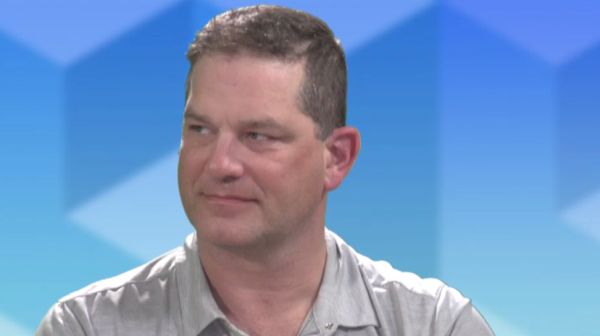 BIG DATA
BIG DATA
 BIG DATA
BIG DATA
 BIG DATA
BIG DATA
The tech world stands at the bottom of a great waterfall. All around, data comes down upon businesses in a flood, coursing from smartphones, sensors and computers across the globe. Collecting and using this torrent of data as it streams past is a challenge that still has no good answers.
Business is not prepared for the rush of information that will come with the Internet of Things, according to Tyler Bell (pictured), IoT expert.
“The reason IoT is so hot right now is it’s connecting a lot of things that are also hot right now,” said Bell.
He spoke with John Furrier (@furrier), co-host of theCUBE, SiliconANGLE Media’s mobile live streaming studio, at SiliconANGLE’s Palo Alto, CA, studio to discuss news from the Google Cloud NEXT 2017 event. (Disclosure below.)
Bell explained that the idea of data used to be the database, a fixed entity. Now, data analytics allows people to understand loose data. Where once was a database full of defined and labeled information, now systems are getting smarter.
“Data is driving hardware and sensors to be more intelligent,” Bell said.
The cloud has allowed companies to process this data at an affordable price. Bell felt this pairing of affordable processing and massive data collection was a wonderful combo. He saw that everything exciting in this area was happening at the nexus of the real world and how the data is captured and processed.
“All these interesting things happening now are how the online world connects with the real world,” Bell said. All this data is being captured with sensors. These sensors are becoming very cheap. The Internet of Things is connecting these cheap sensors directly to cloud processing.
The cloud is a critical part of the IoT stack, he said. Cloud providers are now taking their particular skillsets and adjusting them to create IoT platforms. However, because the Internet of Things is generating so much data, it’s inefficient to send it all back to the cloud. This means the device gathering that data must itself be smart enough to do most of the processing.
“In IoT, I especially look for companies that understand the product is no longer just a device, but a combination of the device, intelligence and the cloud,” Bell said. The full stack is not just one device, he added. So, what can thousands of sensors or millions of smartphones tell a company?
Watch the complete video interview below, and be sure to check out more of SiliconANGLE and theCUBE’s coverage of Google Cloud NEXT 2017. (*Disclosure: Some segments on SiliconANGLE Media’s theCUBE are sponsored. Sponsors have no editorial control over content on theCUBE or SiliconANGLE.)
THANK YOU